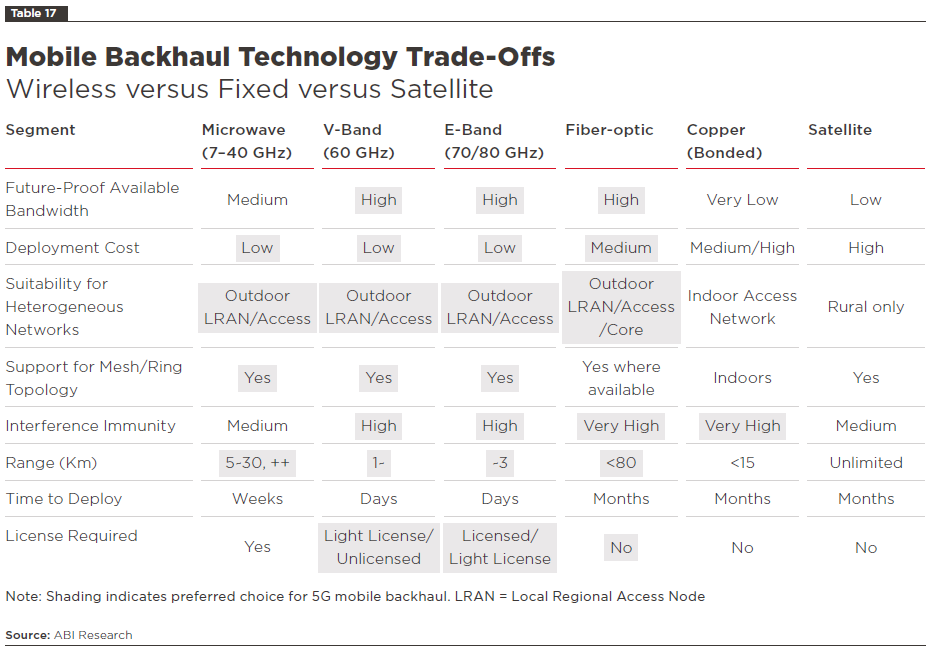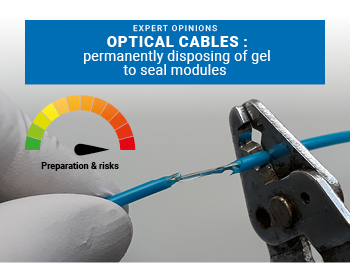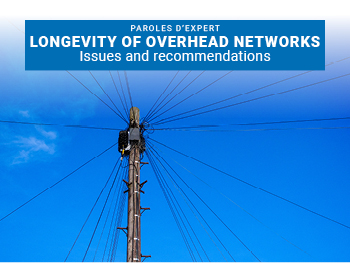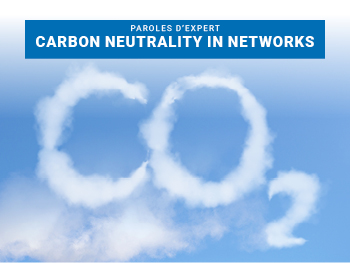5G network: fibre optics vs microwave
What is a microwave link?
The microwave link is a point-to-point (P2P) radio signal transmission system that is used to transport mobile data. A microwave link can cover a distance of up to 150 kilometres between a transmitter and a receiver. Originally developed for military applications, it is now widely used in mobile networks for connecting sites (backhaul).
Compared to fibre optics, which is the main alternative, the microwave link has two major advantages:
- Easy and fast installation: a microwave link is deployed and made operational in just a few weeks
- Low cost: the microwave link uses the air, so it does not require any civil engineering works between the transmitter and the receiver. This significantly reduces its cost.
However, this technology does not guarantee uninterrupted transmission, and it is therefore not secure. The signal is sensitive to:
- Atmospheric characteristics: the field must remain clear, weather conditions
- Interference: electromagnetic disturbances and potential hacking of the relay
Evolving towards 5G
In traditional frequency bands, microwave links can reach speeds of between 300 Mbps and 1 Gbps. By exploiting new frequency bands (V-Band and E-Band), microwave link will be able to reach speeds that are 10 to 25 times higher by 2025, but over shorter distances.

Microwave links in France and worldwide
To date, the French network has almost 90,000 mobile sites. With the deployment of new 5G technologies and their challenges, this number of sites should be 6 to 25 times higher, with a few hundred thousand sites by 2030.
There are currently more than 55,600 links in France, the average distance of which is 5 kilometres.
Internationally, the share of microwave links was 68% in 2017, compared with 26% for fibre optics. It is estimated that this share will decrease to 57% by 2025, while fibre links will increase to 40%.
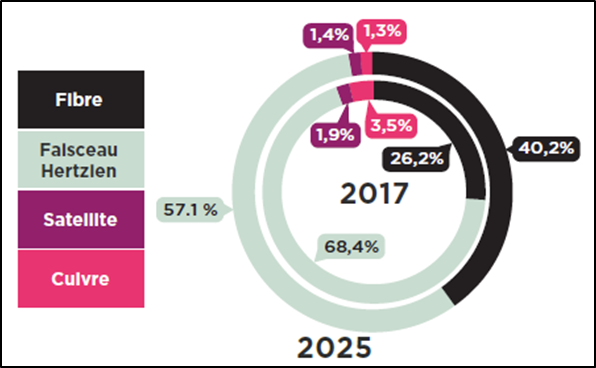
The share of microwave links increased from 57.1% to 62%, excluding North-East Asia, a territory that is already largely using fibre optics (China, South Korea, Japan).
The major challenges of 5G: what is the best choice of infrastructure for the mobile networks of tomorrow?
Aggregation of speed on site, a disparity of need
Changes in usage linked to 5G (in number and quality) require a constant increase in the network’s speed capacity.
In 2025, the needs of mobile sites, in terms of capacity, will vary in urban areas from 5 to 20 Gbps. These needs could reach up to 100 Gbps by 2030. In rural areas, given the lower population density, a mobile site will aggregate less speed, from 300 Mbps to 2 Gbps.
Technically, microwave links will be able to provide these speeds but over much smaller distances (1 to 3 kilometres maximum). They are therefore likely to be preferred in rural areas, where there will be less demand for speed.
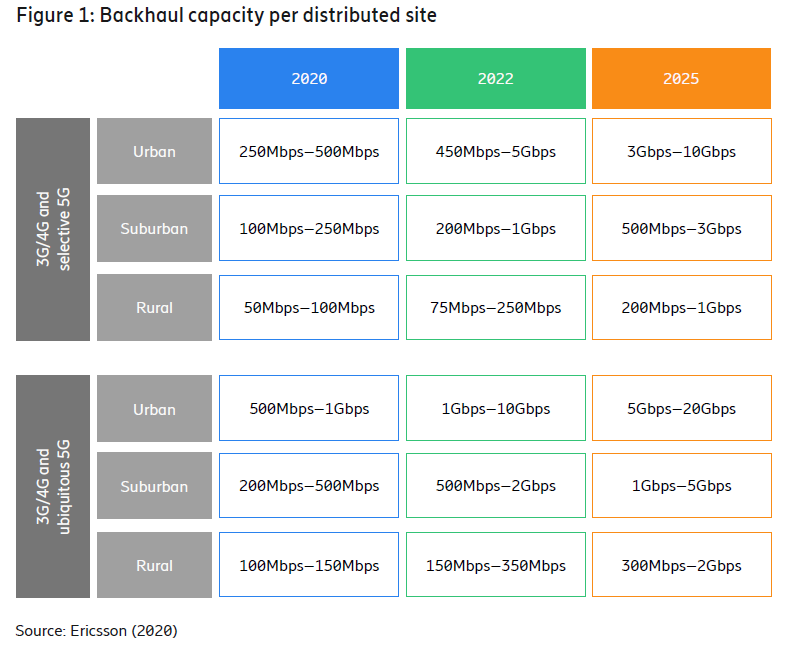
Latency - a challenge that is addressed through architecture:
New uses, such as Industry 4.0, telemedicine, networked vehicles and even gaming, will gradually be supported by 5G technology and will require that latency be reduced as much as possible. Latency will be a key lever in the monetisation of 5G networks.
The speed of propagation of a wave in the air is the speed of light. However, in a fibre, the light wave propagates at 75% of this speed. The microwave link therefore inherently has an advantage in terms of latency.
Securing mobile networks: a key issue
Beyond the issue of latency, high added-value URLLC (Ultra Reliable Low Latency Communications) uses must be extremely reliable. They require strong network security (double adduction, encryption, etc.) which is currently not strong enough and does not address this challenge.
As mentioned above, the main disadvantage of the microwave relay lies in its sensitivity to its environment and interference. Therefore, optical links are more favourable in terms of improving the security of mobile networks.
Optimising your TCO in the deployment of mobile infrastructures
The TCO (total cost of ownership) corresponds to the total cost of the network for its entire service life (i.e. the sum of the costs of network infrastructure, installation, deployment, maintenance, use, etc.). Optimising the TCO is essential in ensuring that investments are cost-effective.
Over the distance that a microwave link covers, the cost of an optical link is approximately 10 times higher. Optical links may therefore seem more expensive. However, if microwave links cover ever shorter distances, this means that the amount of equipment will increase, and the overall cost will be higher over time. In addition, although optical links are more expensive to deploy, they will be usable over much longer distances and will also be more durable and scalable (unlimited bandwidth). This technological scalability is therefore a considerable advantage in the long term and should be taken into account in anticipating needs and calculating the TCO. Investments in these optical infrastructures can be used, in particular, for future generations of mobile networks.
Fibre optics and microwave links: two complementary technologies
Each mobile data transmission technology has its place.
Fibre optics is the technology of the future. It is more reliable, more secure, capable of dealing with higher speeds and more scalable. Without a doubt, it will be the core technology of mobile networks, and it will gradually replace microwave relay links.
However, the microwave link will continue to have a place in rural areas and/or for short ranges. An optimal technical-economic response will therefore be based on the complementarity of these two technologies.
